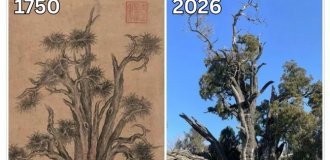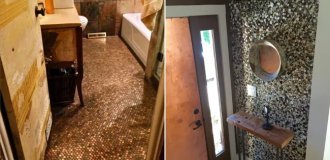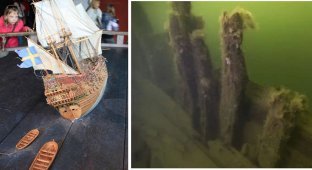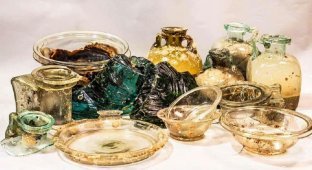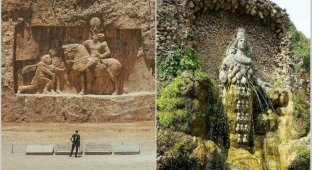Archaeologists have discovered new treasures in the sunken ancient Heraklion (8 photos)
Marine archaeologist Frank Goddio shared new valuable discoveries made in the “lost” Egyptian city of Heraklion. This the city sank in the Mediterranean Sea as a result of an earthquake over a thousand years ago, which is why it is often compared to the mythical Atlantis. 
Among the discovered artifacts are gold jewelry, silverware and a strange duck-shaped pouring device. Also archaeologists have found a djed, a pillar symbol from Egyptian hieroglyphs, made of lapis lazuli, and an eerie ceramic hand. She stuck out from the bottom sediments.
For centuries, Heraklion was Egypt's largest port on the Mediterranean Sea (before the founding of Alexandria by Alexander the Great in 331 year BC). Heraklion has been described as the Egyptian version of Atlantis. But if there are many doubts about the existence of Atlantis, There are definitely no such doubts about Heraklion. This is not mythology, but real story. 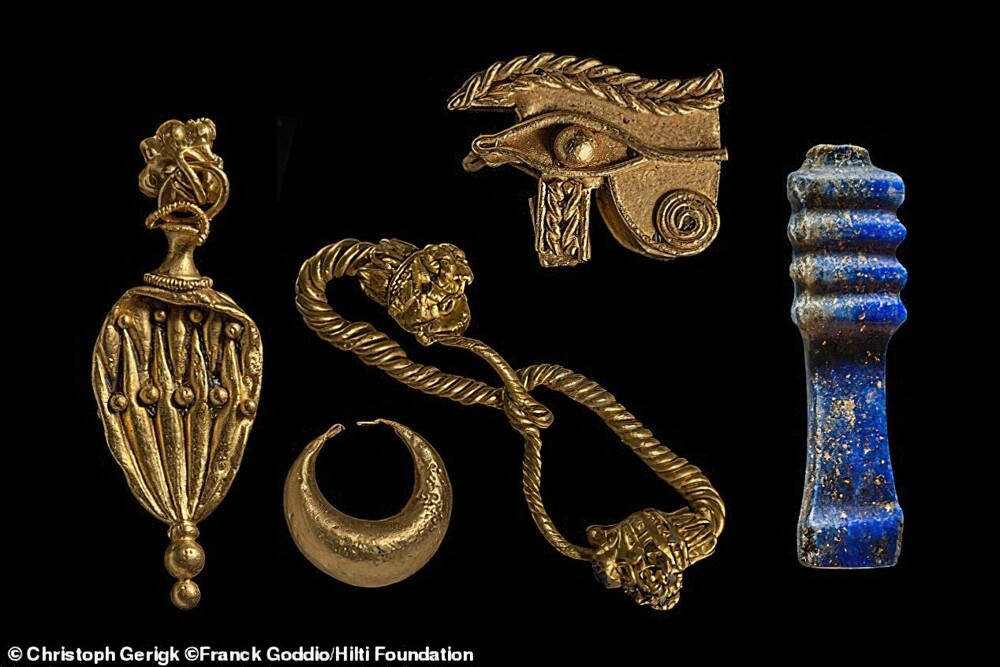
Gold objects, jewelry and djed (symbol of stability) were found in the ruins of Heraklion. They probably date from the 5th century BC ad. 
The hand of some statue sticks out of the bottom sediments. She dates back to the 5th century BC - the beginning of the 4th century BC. Place origin - probably Cyprus.
Frank Goddio, who rediscovered Heraklion back in 2000 year, described the new finds on his website as "precious" and "touching".
“They testify to the wealth of this sanctuary and the piety of the former inhabitants of the port city,” he said.
According to Goddio, Heraklion was founded around the 8th century BC AD and became a mandatory port of call in Egypt for all ships, coming from the Greek world. However, sometime in the 8th century AD Heraklion is completely submerged in the depths of the Mediterranean Sea - most likely as a result of a series of natural disasters (earthquakes and tsunamis). The ruins of the city are now located under water, approximately 7 kilometers from the current coast of Egypt.
Recent excavations carried out in July this year covered the southern channel of the lost city, where the remains of the great temple are located, dedicated to Amon, the Egyptian god of air. According to Goddio, huge the stone blocks of the temple collapsed during a "catastrophic event" dating back to the middle of the second century BC - approximately 1000 years before the entire city was lost.
Silver ritual stones were found at the site of the temple. tools, gold jewelry and fragile alabaster containers, probably for the spirits. Two ritual dishes intended for “libation offerings to the gods” were made of silver, which was considered in the Ancient Egypt is extremely valuable. Found djed, one of the most recognizable Egyptian symbols, made of semi-precious stone lapis lazuli, has long been prized for its deep blue color.
“It is extremely touching to discover such fragile objects that survived despite cruelty and scale cataclysm,” said Frank Goddio.
Below the temple grounds, archaeologists also discovered underground structures supported by well-preserved wooden pillars and beams dating back to the 5th century BC. 
Heraklion was one of the most important trading centers Mediterranean. Before the founding of Alexandria by Alexander the Great in 331 Heraklion was the largest port city in Egypt. 
Two silver ritual dishes for libations to the gods from temple treasures. Silver was considered extremely valuable in ancient times Egypt. An alabaster perfume bottle was found nearby. 
Huge blocks of the Temple of Amun, which fell in the middle of the second century BC in the southern channel of Heraklion. They were found under a layer of hard clay at a depth of about 3 meters.
To the east of the Temple of Amon, archaeologists also discovered Greek sanctuary dedicated to Aphrodite, the ancient Greek goddess carnal love and beauty.
Imported bronze and ceramics were discovered in the sanctuary items, including an elegant duck-shaped vessel that was in surrounded by ceramic pots and shields. The item dates back to the 4th century BC AD and could have been used for pouring wine, potentially indicates trade relations with the Greeks.
"This is a poksays that the Greeks who were allowed trade and settle in the city during the pharaohs of the Sait dynasty (664–525 BC), had sanctuaries dedicated to their gods - Goddio added. —The presence of Greek mercenaries is evidenced by Numerous finds of Greek weapons."
French explorer found Heraklion more than 20 years ago back. New geophysical exploration technologies that have emerged since then made it possible to discover new cavities and objects buried under layers clay several meters thick. 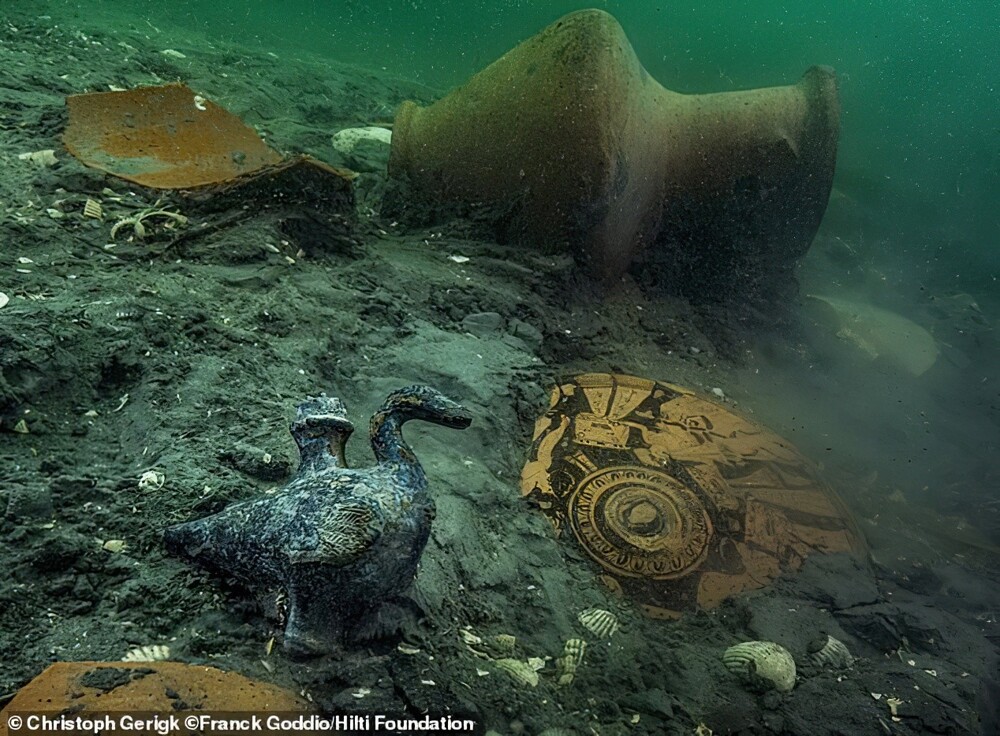
Elegant bronze vessel in the shape of a duck discovered among pottery 4th century BC on the site of the recently opened Greek sanctuary of Aphrodite in Heraklion. 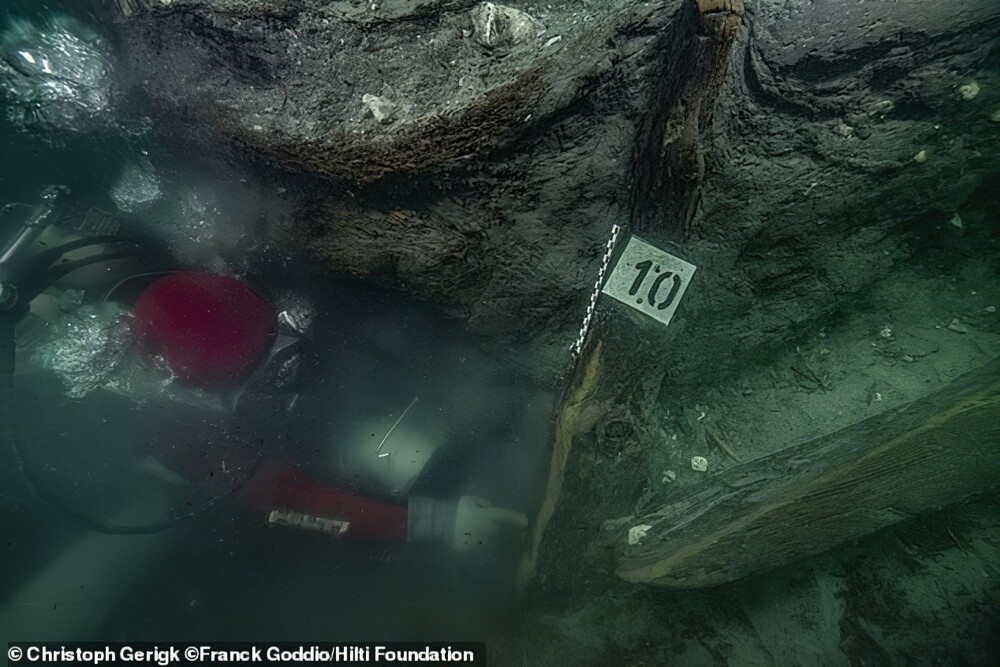
Very well preserved underground wooden structures were found under the floor level of the Temple of Amun. 5th century BC
Previous finds from Heraklion such as statues of pharaohs and deities, have already been exhibited at the British Museum in London.



